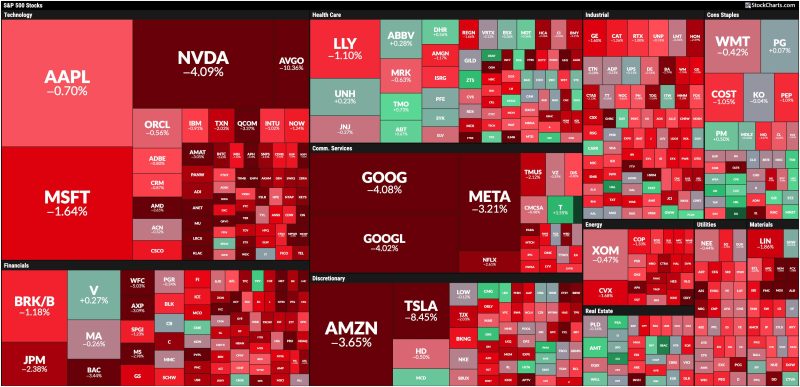Broad-Based Stock Market Selloff: How to Position Your Portfolio
Asset Allocation Strategy
One of the key strategies to navigate a broad-based stock market selloff is asset allocation. Diversifying your portfolio across different asset classes such as equities, fixed income, real estate, and commodities can help cushion the impact of a market downturn. By spreading your investments across various asset classes, you reduce the risk of significant losses in any one area.
Rebalancing Your Portfolio
In times of market turmoil, it is crucial to reassess your portfolio’s asset allocation and make necessary adjustments. Rebalancing involves selling assets that have outperformed and buying assets that have underperformed to realign your portfolio with your long-term investment goals. By regularly rebalancing your portfolio, you can take advantage of market fluctuations and maintain a well-diversified investment mix.
Safe-Haven Investments
During a broad-based stock market selloff, investors often seek safe-haven investments that are less volatile and provide stability to their portfolios. Traditional safe-haven assets include gold, U.S. Treasury bonds, and cash equivalents. Allocating a portion of your portfolio to these assets can help mitigate losses during market downturns and preserve capital.
Quality Over Quantity
In times of market uncertainty, focusing on quality investments over quantity can help protect your portfolio from significant losses. Quality companies with strong fundamentals, solid balance sheets, and competitive advantages are better positioned to weather market volatility and economic downturns. Conduct thorough research and due diligence to identify high-quality investments that can provide long-term value and stability to your portfolio.
Stay Informed and Stay Calm
Amidst a broad-based stock market selloff, it is essential to stay informed about market developments and economic indicators to make well-informed investment decisions. Avoid making impulsive decisions based on emotions or short-term market fluctuations. Instead, adopt a long-term investment perspective and remain calm during periods of market turbulence. Remember that market downturns are a normal part of the investment cycle, and maintaining a disciplined approach can help you navigate through challenging times.
In conclusion, navigating a broad-based stock market selloff requires a proactive approach to portfolio management, including asset allocation, rebalancing, safe-haven investments, focusing on quality, and staying informed and calm. By following these strategies, investors can position their portfolios to withstand market volatility and achieve long-term investment success.
